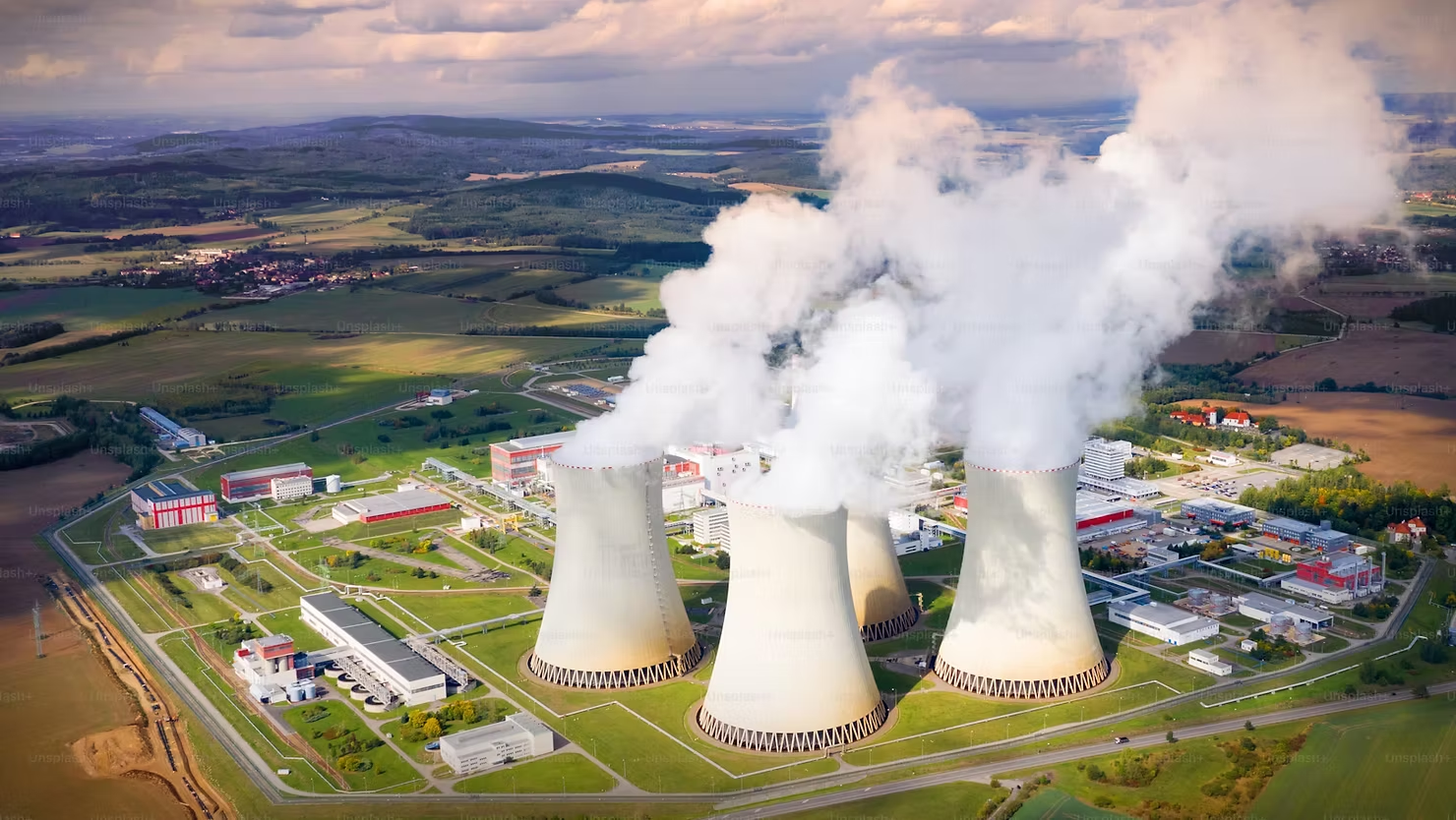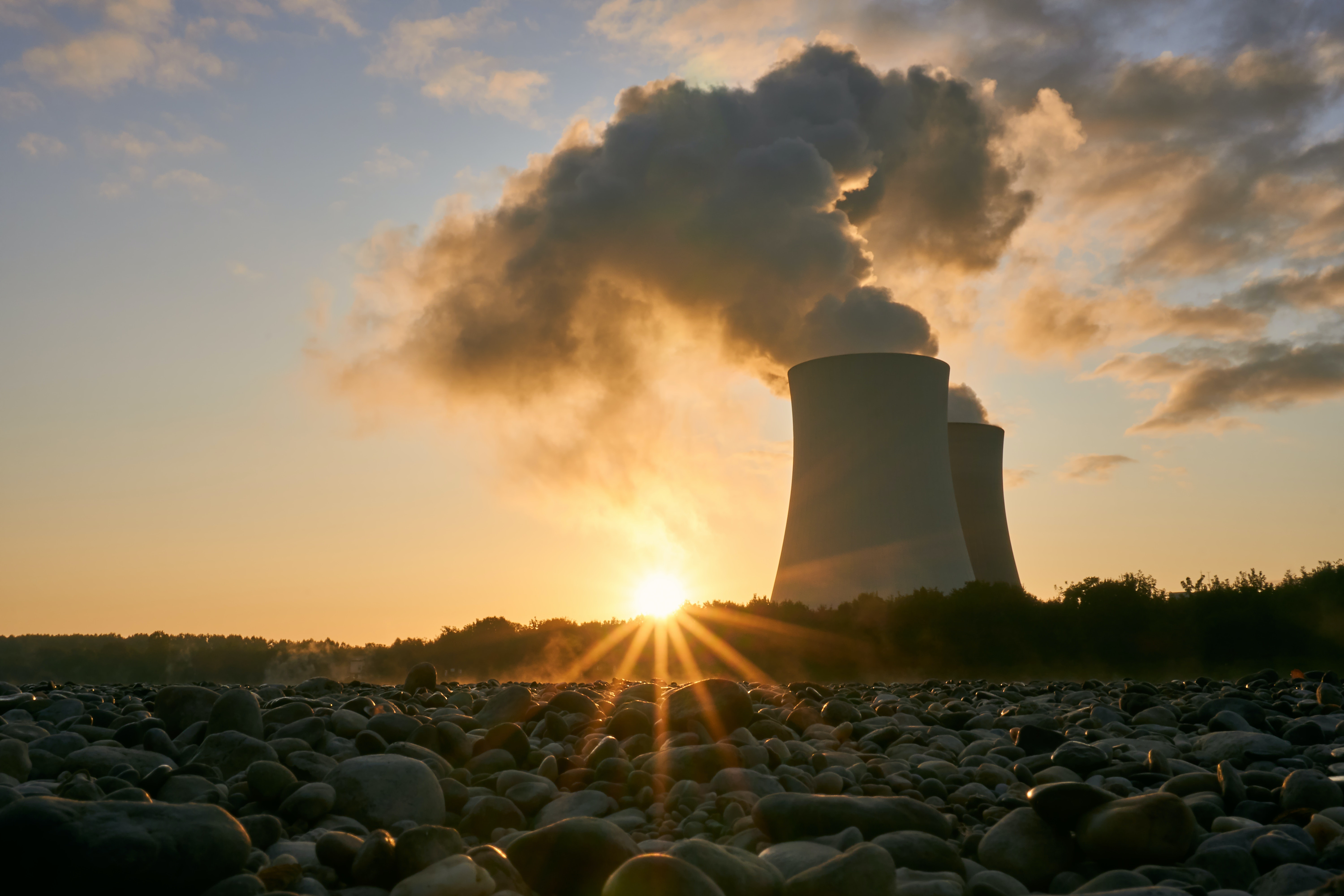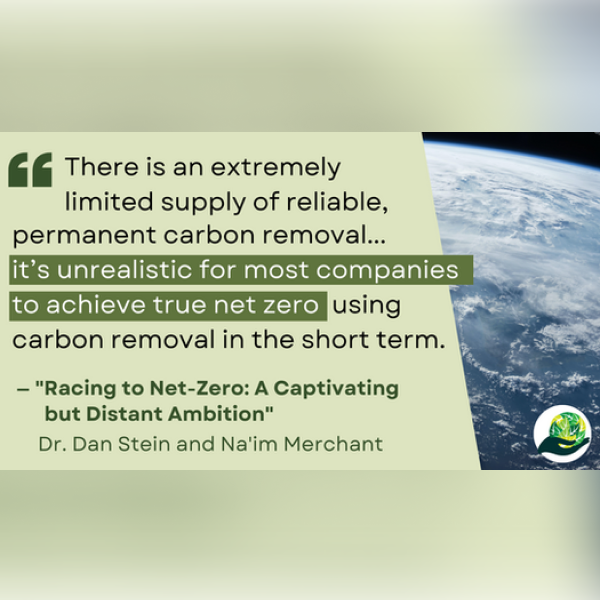Top climate nonprofits 2023: best bets for your climate donation
Climate charity evaluator Giving Green announces annual top giving strategies and nonprofits
As the planet warms, the race to tackle climate change is also heating up.
The investments in clean hydrogen and breakthroughs in geothermal energy that we witnessed in 2023 are just the start of the green transition.
At Giving Green, we believe that individuals can make a real impact by reshaping the laws, norms, and systems that perpetuate unsustainable emissions. One effective and accessible climate action you can take is supporting high-impact climate nonprofits advocating for systemic change.
Giving Green is a trusted guide for individuals, foundations, and businesses to make more effective climate giving decisions. As the green transition unfolds, we believe there are more opportunities than ever for smart giving.
2023 top climate nonprofit recommendations
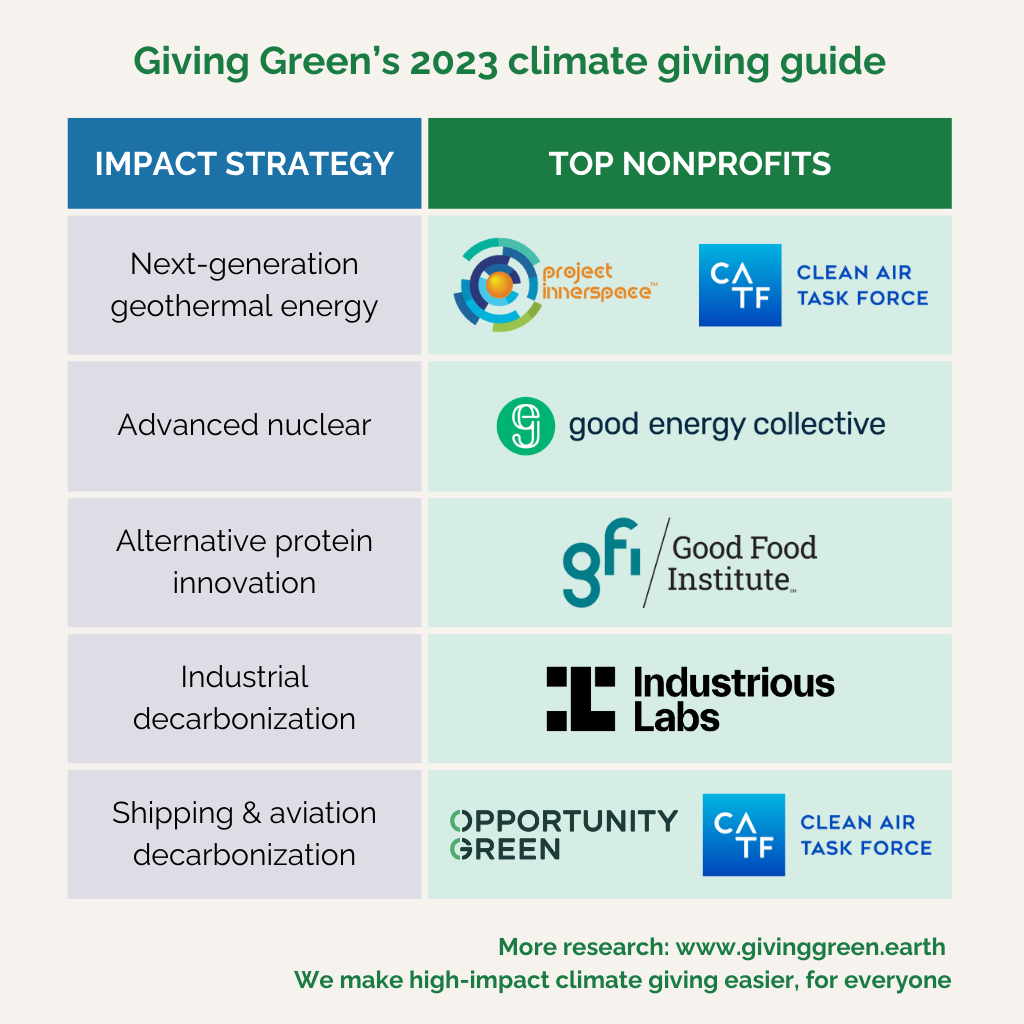
Our team of researchers spent a year finding timely giving strategies that have huge potential impact, but are relatively neglected by traditional climate funding. Our findings led us to double down on one area where we believe climate donors can have an outsized impact:
Advancing key climate technologies through policy advocacy, research, and market support.
We think that technological progress provides a uniquely powerful and feasible way to decarbonize, as it allows the energy transition to proceed while minimizing costs to quality of life and the economy. Having surveyed the policy and technology landscape in 2023, we highlight five key sectors ripe for innovation. And within those, we recommend six top climate charities for 2023.
Below are our top climate nonprofit recommendations, in reverse alphabetical order:

Deep underground, the Earth’s crust holds abundant heat that can supply renewable, carbon-free heat and reliable, on-demand electricity. However, conventional geothermal systems have been limited to places bordering the Earth’s tectonic plates.
Project InnerSpace is fast-tracking next-generation technologies that can make geothermal energy available worldwide. It has a bold plan to reduce financial risks for new geothermal projects, making geothermal energy cheaper and more accessible, especially in densely populated areas in the Global South.
We believe Project InnerSpace is a top player in the geothermal sector and that its emphasis on fast technology development and cost reduction can help geothermal expand globally.
For more information, see our Project InnerSpace recommendation summary.

Aviation and maritime shipping are challenging sectors to decarbonize and have not received much support from philanthropy in the past.
Opportunity Green has a multi-pronged strategy for reducing emissions from aviation and maritime shipping. It pushes for ambitious regulations, promotes clean fuels, encourages companies to adopt greener fleets, and works to reduce demand for air travel. We think Opportunity Green has a strong theory of change that covers multiple ways to make a difference. We are especially excited about Opportunity Green’s efforts to elevate climate vulnerable countries in policy discussions, as we think this could improve the inclusivity of the process and the ambition level of policies.
For more information, see our Opportunity Green recommendation summary.

Heavy industries like steel and cement are the building blocks of the global economy. They account for around one-third of greenhouse gas emissions but have not been a major focus of governments or philanthropists.
Industrious Labs runs comprehensive campaigns to decarbonize specific industries, targeting corporate actors and governments alike to adopt policies necessary to transform the sector. Critically, through coalition building, regranting, and training, it is scaling advocacy well beyond their own organization.
We are excited about Industrious Labs’ actionable, industry-specific strategies and the strength of its leadership team.
For more information, see our Industrious Labs recommendation summary.

Livestock production is responsible for at least 10% of global emissions—livestock belch methane, require substantial (often deforested) grazing land, and consume a large amount of agricultural production. However, there has been little government effort to meaningfully reduce agricultural emissions. We think one of the most promising pathways for emissions reduction is shifting demand from carbon-intensive conventional livestock products to alternative proteins, such as plant-based and cultivated meat.
The Good Food Institute (GFI) seeks to make alternative proteins as affordable and tasty as conventional products. It pushes for more government funding for research, fights for fair labeling, and helps cultivated meat get to market. We think GFI is a powerhouse in supporting alternative proteins, with impressive wins under its belt.
For more information, see our Good Food Institute recommendation summary.

We believe nuclear power can play an important part in reducing emissions because it provides consistent, clean energy with low land requirements. As part of a diverse energy portfolio, it can complement other energy sources, such as wind and solar.
Good Energy Collective supports nuclear energy as part of an environmentally just climate change agenda. It backs advanced nuclear reactors, which are designed to be safer, cheaper, and more versatile than conventional reactors.
We think Good Energy has carved a unique niche in nuclear power advocacy by focusing on the intersection of expanded deployment, community engagement, and justice.
For more information, see our Good Energy recommendation summary.

Having had a successful track record of pushing for climate solutions in the US, Clean Air Task Force (CATF) is now going global. By identifying barriers to technology deployment, engaging with stakeholders, and advocating for supportive policies, CATF aims to speed up the growth of low-carbon technologies to reduce emissions broadly and quickly.
We are particularly impressed that CATF has built momentum for areas of innovation that need more funding support, such as superhot rock geothermal energy, zero-carbon fuels, and the decarbonization of aviation and maritime shipping.
For more information, see our CATF recommendation summary.
How we find effective climate charities

We started by assessing various impact strategies and narrowing in on ones that we believed could substantially reduce emissions, were feasible, and needed more funding. This assessment involved conducting expert interviews and performing a comprehensive review of research literature, policy briefs, and industry reports.
After developing a short list of impact areas, we explored the ecosystem of nonprofits operating in each space by speaking directly with organizations and other stakeholders. We used our findings to evaluate each organization’s theory of change and its capacity to absorb additional funding. This process ultimately leads us to a new set of top recommendations each year.
For more information, see Giving Green’s Research Process.
How you can take effective climate action
We believe donating to high-impact climate change charities is an easy way to connect your micro action with macro change. Here are several ways you can take climate action, effectively:
- Learn more at our webinar
Join our webinar on November 29 to learn more about our research and hear from some of our top recommendations.
- Donate to top climate nonprofits
To easily support our top nonprofits, you can make a donation to the Giving Green Fund, which regrants to our top charities, with no management fees.
Alternatively, you can donate directly to any of the recommended nonprofits.
- Support Giving Green’s research
Each year, the Giving Green team spends thousands of hours to find and fund effective climate charities. We do not take any cut of donations to our recommendations, so we rely on generous donors to fund our research and communications efforts. Historically, every dollar donated to Giving Green’s operations has been converted into $11 of additional donations to high-impact climate charities. Support our work to be a climate impact multipler.
Questions? Want to collaborate? Regardless of where you are along your climate journey, we would love to hear from you. Contact us here.
Support Our Work
Giving Green Fund
One fund. Global impact. One hundred percent of your gift supports a portfolio of high-impact climate organizations, vetted by our research.
Best for:
Donors who want the simplest way to impact multiple climate solutions.
Top Climate Nonprofits
Meet the organizations on Giving Green’s list of high-impact nonprofits working to decarbonize our future, identified through our rigorous research.
Best for:
Donors who want to give directly and independently.
Support Our Work
We thoroughly research climate initiatives so you can give with confidence. For every $1 we receive, our work unlocks another $21 for effective climate solutions.
Best for:
Donors who want to amplify their impact through research.



.png)




.png)





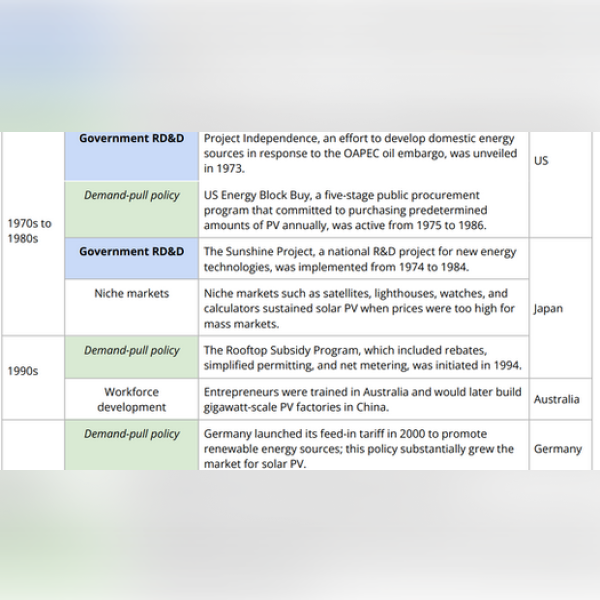

.png)



















.png)
.png)

.png)


.png)









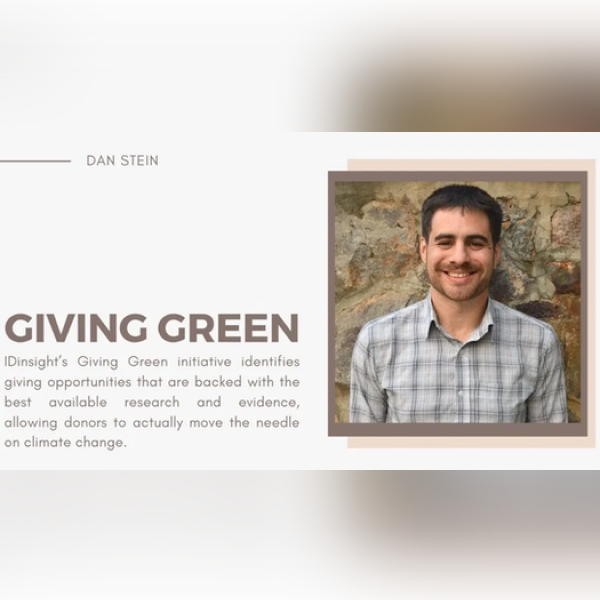

.png)
